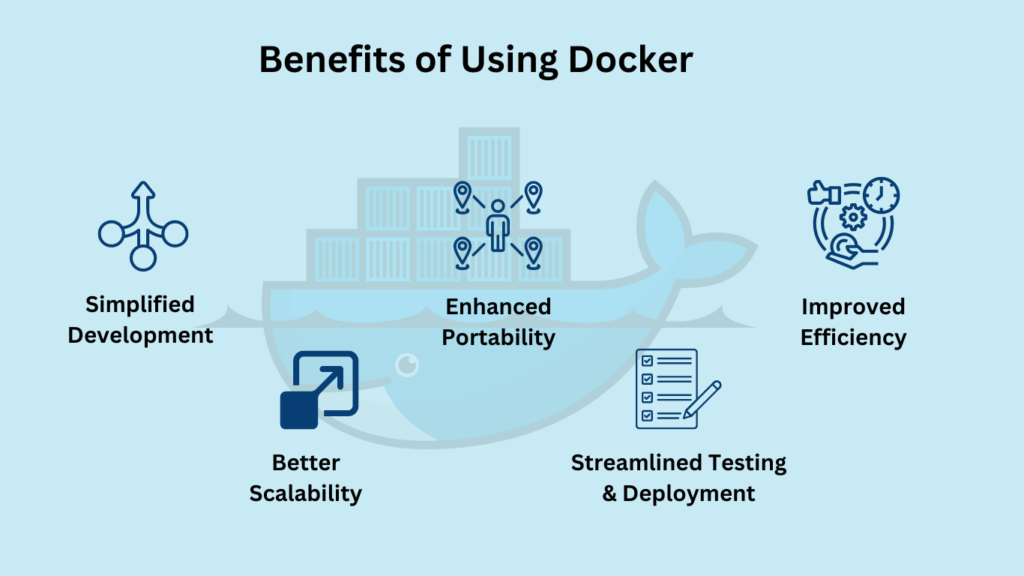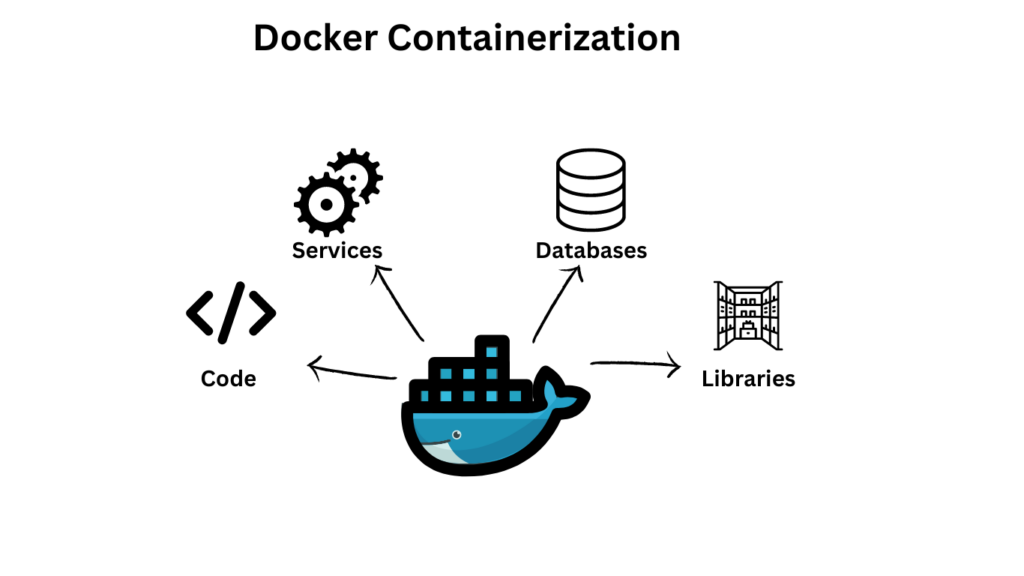Docker
Home > Page
Introduction:
In the hastily evolving global of software development, agility, and scalability are paramount. Microservices structure has emerged as a powerful approach to building complicated, disbursed structures by breaking down packages into smaller, potential offerings. Docker, a main containerization platform, plays a vital role in enforcing and dealing with microservices. In this newsletter, we are able to delve into the advanced uses of Docker for microservices architecture, exploring its advantages, key ideas, and sensible applications.
What is Docker and Why is it Used?
Docker is an open-supply platform designed to automate the deployment, scaling, and control of packages. It achieves this by means of encapsulating packages and their dependencies into containers. These bins are light-weight, transportable, and can run continuously throughout numerous environments, from development to production.
Key Benefits of Docker:
Portability: Docker packing containers can run on any gadget that helps Docker, making sure consistency throughout one-of-a-kind environments.
Efficiency: Containers share the host system’s kernel, making them greater light-weight and useful resource-efficient as compared to traditional digital machines.
Scalability: Docker makes it clean to scale programs horizontally by means of including or disposing of containers as needed.
Isolation: Each box runs in its isolated surroundings, enhancing security and lowering the danger of conflicts between dependencies.

Docker: Accelerated Container Application Development Docker accelerates the improvement and deployment of containerized applications in numerous ways:
- Simplified Development Workflow:
Docker streamlines the improvement workflow through allowing developers to create and proportion packing containers that encapsulate the entire software environment. This eliminates the “it works on my machine” trouble, ensuring that programs run constantly across exceptional ranges of development, testing, and production. - Efficient Resource Utilization :
Containers are light-weight and percentage the host gadget’s kernel, making them more green in terms of useful resource usage in comparison to conventional virtual machines. This efficiency permits builders to run more than one box on a single host, maximizing useful resource utilization.
- Rapid Deployment and Scaling:
Docker boxes may be started and stopped fast, facilitating speedy deployment and scaling of applications. This agility is especially beneficial for microservices architecture, where services need to be deployed and scaled independently.
- Microservices Architecture:
Docker is an excellent platform for imposing microservices structure. By breaking down programs into smaller, impartial services, builders can improve modularity, scalability, and maintainability. Docker packing containers offer the best environment for running those microservices, making sure isolation and consistency.
- Continuous Integration and Continuous Deployment (CI/CD) :
Docker integrates seamlessly with CI/CD pipelines, permitting automated testing, building, and deployment of applications. By the use of Docker in a CI/CD pipeline, builders can make sure that every alternative is tested and deployed continually, lowering the risk of mistakes and rushing up the improvement cycle.

Implementing Microservices with Docker
- Designing Microservices:
When designing microservices, it’s essential to identify the specific components of your application and define clear boundaries among them. Each microservice needs to be a self-contained unit with its personal common sense, database, and dependencies.
- Containerizing Microservices :
Each microservice can be encapsulated in its Docker field. This ensures that the microservice runs consistently across specific environments. For instance, you would possibly have separate packing containers for a consumer carrier, an order provider, and a price provider.
- Managing Inter-Container Communication :
Microservices need to speak with each different, and Docker gives numerous mechanisms to facilitate this:
Docker Networks: Docker lets in you to create custom networks on your packing containers, ensuring they could communicate securely.
Service Discovery: Tools like Docker Compose and Kubernetes offer carrier discovery mechanisms, allowing containers to find and communicate with each different the usage of service names.
- Scaling Microservices
One of the key advantages of microservices architecture is the ability to scale services independently. Docker makes it smooth to scale individual microservices by way of jogging multiple instances of a container and distributing the burden amongst them.
- Monitoring and Logging
Effective monitoring and logging are important for coping with microservices. Docker provides several equipment and integrations to reveal box overall performance and collect logs
Docker Stats: Provides actual-time metrics on box performance. Logging Drivers: Docker helps diverse logging drivers to ahead logs to external structures like ELK Stack, Splunk, or Fluentd.
In the end,Docker has revolutionized the way builders build, install, and manipulate applications. Its containerization talents, combined with its efficiency and scalability, make it a great platform for imposing microservices architecture. By expertise and leveraging Docker’s superior capabilities, builders can create robust, scalable, and maintainable packages that meet the demands of modern software program development. Whether you’re new to Docker or seeking to deepen your knowledge, getting to know Docker for microservices architecture is a precious skill which can substantially decorate your development workflow.
Also Read – Jenkins Programming

